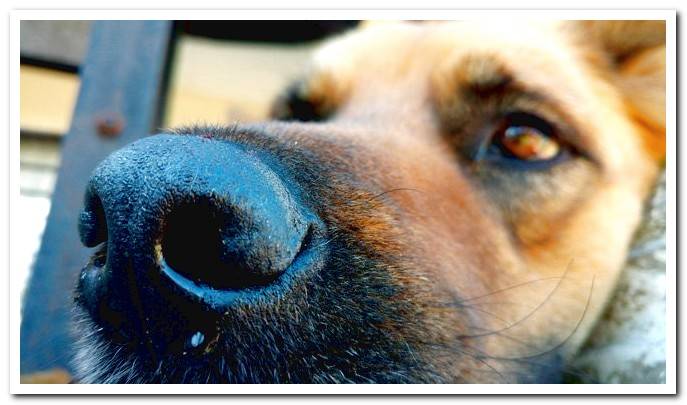
It comes unexpectedly and causes serious health problems in our furry. Although meningitis is a deadly disease, if it is detected early and proper treatment is followed, many dogs manage to recover.
Therefore, it is important that you know all the details about this disease. So, if you ever appreciate any of these symptoms in your own dog, you can act on time.
Index of contents
- 1 Types of meningitis
- 2 Main symptoms of meningitis in dogs
- 3 Sequelae of meningitis
- 4 Canine meningitis be spread to humans?
- 5 Treatments for meningitis
Types of meningitis
Canine meningitis is a disease that causes inflammation of the meninges, membranous layers that protect the dog’s brain and spinal cord. The causes of this condition can be very varied and, depending on it, various types of meningitis are distinguished.
One of the best known is the autoimmune immunomediated meningitis, which is usually diagnosed more in puppies and young dogs. In these cases, the disease is aseptic. That is, it is related to a dysfunction of the immune system itself and not to infectious processes.
There are also the infectious meningitis, which are caused by bacteria or viruses. They can occur in dogs of any age, causing tremors, severe pain, seizures, fever or paralysis, among many other symptoms.
Inflammation of the meninges is usually accompanied by inflammation of the brain, which is why doctors often use the term meningoencephalitis to refer to this evil.
If associated with an inflammation of the arteries of the central nervous system, then there is talk of meningitis-arteritis, which is the most frequent variant in dogs, especially in large breeds.
In any case, it will be the veterinaryn who, through different tests and analyzes, will be able to give an accurate diagnosis. MRIs, ultrasounds, and punctures to remove and examine cerebrospinal fluid are often the key procedures in determining what type of meningitis a dog suffers from.

Main symptoms of meningitis in dogs

Although the symptoms can be very varied depending on the type of meningitis contracted and the state of health and age of the dog itself, these are the most common symptoms when suffering from this disease:
- Disorientation, lethargy, slow to react
- Body stiffness (muscles) and possible spasms (tremors)
- Total or partial loss of appetite, vomiting, dizziness
- High fever
- Excessive sensitivity (hypersensitivity)
In the presence of one or more of these symptoms, the ideal is to always go to a vet to carry out the relevant tests and be able to diagnose.
Sequelae of meningitis
In the treatment of canine meningitis, the time factor it is key to stop the evolution of this disease and completely overcome it. If not detected early, the dog could die or suffer very serious complications for its health.
One of the most dangerous is the hydrocephalus, which is an accumulation of cerebrospinal fluid in the brain. Therefore, it is very important that, at any warning sign, you take the dog to the vet immediately.
In some cases, dogs that manage to recover from meningitis will need to follow physical therapy and medical treatment for life.
The most common sequelae are:
- Seizures, from brain dysfunction caused by meningitis.
- Paresis. That is, a partial light paralysis that affects one or more muscles in the body.
- Paralysis. It prevents the dog from moving, maintaining balance and posture as it normally would.
As you can see, most of the sequels are the result of the damage that inflammation causes in the dog’s brain and nervous system. Once the emergency is over, your vet will advise you how to deal with them and what is the best way to go to try to minimize them as much as possible.

Canine meningitis be spread to humans?

A common question, after confirming the diagnosis of meningitis in our furry, is: “Can this disease be spread to humans?” Certainly we can also suffer it, but it is important that you know that the canine variant is different from ours.
Therefore, it is not possible to produce a contagion from dog to human, nor from human to dog. However, if meningitis has been caused by parasites, it never hurts to take some precaution and take all necessary measures so that they do not reach us.
Treatments for meningitis
As for dog meningitis treatments, the options are several. Depending on the type of meningitis that is diagnosed, one treatment or another will be applied. Steroids are usually prescribed, so that the inflammation of the brain decreases and there are no sequelae.
When meningitis is caused by infectious agents such as bacteria, antibiotics are given intravenously. In addition, other symptoms such as seizures are treated, with specific medications that help stop them.
If it is a serious case, the dog will be hospitalized and will be controlled by a specialist until the crisis is over. You should know that the prognosis of meningitis is very variable, since it depends on both the cause and the physical state of the dog.
It is true that viral meningitis tend to be the most difficult to handle. However, there are many cases in which the dog does respond well to treatment and, with proper care, can return to a normal life.
So if you’re at this point, don’t lose hope and don’t neglect your canine friend’s controls to avoid relapse. Remember: you should never give up the battle for loss, but neither should you forget about the fight after achieving a single victory.
